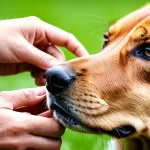Essential Preparations Before Bringing a New Pet Home
Preparing your home for a new pet requires a detailed pet owner checklist to ensure a smooth transition. Start by creating a comprehensive list covering supplies, safety measures, and veterinary care. This structured approach ensures no critical step is overlooked and sets a foundation for responsible pet ownership.
Next, conduct thorough pet-proofing home assessments. Look for common hazards—such as exposed wires, toxic plants, or small objects—that pets might chew or swallow. Initial changes could include securing loose cables, installing gates, and removing hazardous substances. This proactive step reduces risk and promotes a safe environment.
Also read : What Are the Benefits of Pet Therapy for UK Residents?
In the UK, specific legal requirements affect pet preparation. For example, all dogs need to be microchipped, and pets must meet vaccination standards before relocation or public access. Understanding these UK pet preparation norms is essential for compliance and animal welfare. Additionally, checking local regulations helps avoid penalties and ensures pets’ health and safety in their new home.
By combining a well-structured checklist, careful home assessment, and awareness of UK-specific rules, new pet owners can confidently prepare for their companion’s arrival while prioritising safety and compliance.
Have you seen this : How Can You Ensure a Safe Home Environment for Your UK Pets?
Room-by-Room Safety Guide for Pet Owners
Ensuring pet home safety starts with a detailed room-by-room inspection. Different living areas present distinct risks that require targeted attention to minimise hazards.
In the kitchen, common dangers include accessible sharp objects, toxic foods such as chocolate or grapes, and open cleaning products. Secure cabinets with child-proof locks and keep trash bins covered. This prevents pets from ingesting harmful substances or causing accidents.
The bathroom can hold slippery surfaces and medications. Keep all medicine containers out of reach and use non-slip mats. Store toiletries securely to avoid poisoning or injury.
For the garden, check for toxic plants and ensure fences are properly secured. Remove harmful pesticides and chemicals from accessible places. Remember, outdoor spaces may have hidden dangers like sharp garden tools or holes where pets might get trapped.
When considering room safety tips in UK homes, flats often require special measures compared to houses. Limited space means fewer hiding spots but more concentrated hazards like cables or balconies. Installing window guards and using cord organizers can significantly reduce risk.
By systematically reviewing each area with these home hazards for pets in mind, pet owners can create a safer and more comfortable environment that supports their animal’s wellbeing. Practical adjustments reduce emergencies and help pets settle confidently into their new home.






